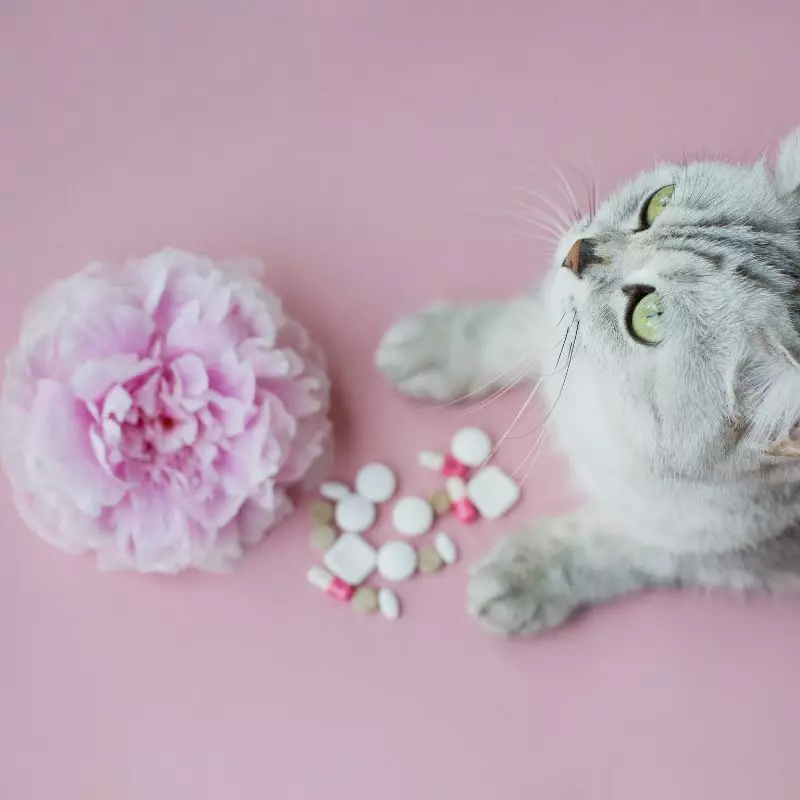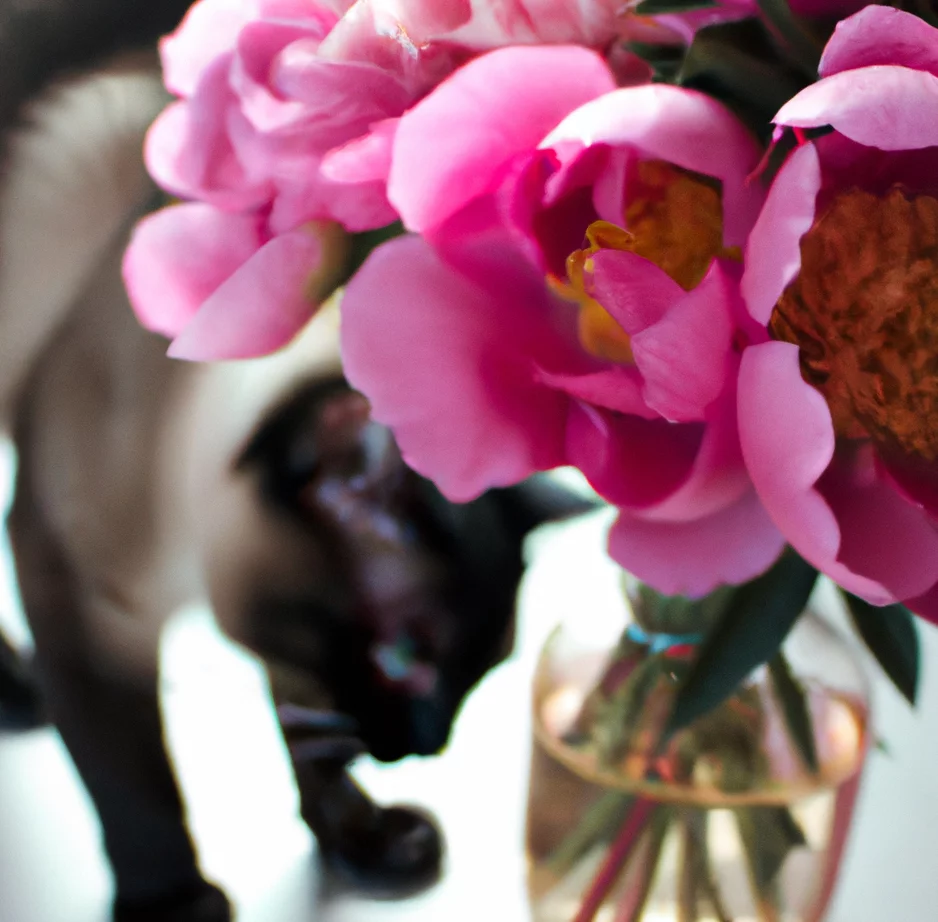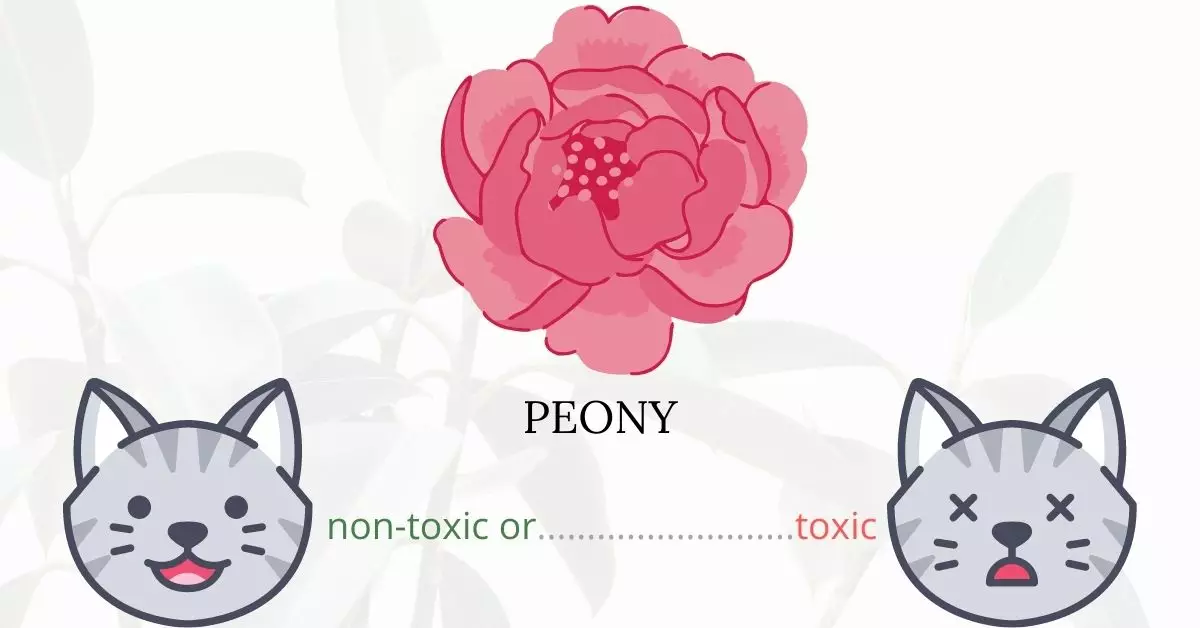Yes, peonies are toxic to cats. According to the American Society for the Prevention of Cruelty to Animals (ASPCA) and other reputable sources, peonies contain a toxin known as paeonol, predominantly found in the bark. If consumed in large amounts, this toxin can lead to gastrointestinal issues, including vomiting and diarrhea in cats. While peony toxicity in cats is generally considered mild and rarely fatal, it’s essential for cat owners to be aware of the potential risks. It should be noted that paeonol affects not just cats but also dogs and horses. The exact mechanism by which the toxin impacts cats remains unclear, but some affected pets have exhibited symptoms like vomiting, diarrhea, and depression.
This article is a collaborative effort, written in partnership with a team of experienced DVMs (doctors of veterinary medicine). Through their insights, we are equipped to offer accurate and timely information about the potential hazards certain plants pose to our feline friends, focusing specifically on peonies in this instance. Furthermore, our information is grounded in rigorous research, referencing high-authority sources such as the ASPCA and PetMD.
Clinical Signs of Peony Poisoning in Cats

When a cat comes into contact with, smells, or ingests parts of the peony plant, it might exhibit various symptoms, each with a potential underlying cause due to the plant’s toxins:
- Vomiting: This is a common initial response as the cat’s body tries to expel the ingested toxins from the peony.
- Diarrhea: The gastrointestinal system is affected by the toxins, leading to digestive disturbances and loose stools.
- Drinking Excessively: Increased thirst could be a compensatory mechanism as the body tries to flush out toxins.
- Difficulty Breathing: Some cats might develop respiratory issues, possibly due to an inflammatory response or allergic reaction to the peony.
- Difficulty Swallowing: Swelling or irritation in the throat due to ingesting the plant could make swallowing harder for the cat.
- Loss of Appetite: The ingestion of toxins may lead to nausea, making the cat reluctant to eat.
- Drooling: This can be a sign of nausea or oral discomfort after coming into direct contact with the plant.
- Increased Heart Rate: The toxins in the peony can stimulate the cat’s cardiovascular system, leading to tachycardia.
- Allergic Reaction: Like humans, cats can have allergic responses to certain plants. This reaction can manifest as skin irritations or respiratory symptoms.
- Incoordination: The neurological system might be affected, leading to a lack of proper coordination in the affected cat.
- Dilated Pupils: This might be a result of a neurological or systemic response to the toxins in the plant.
- Weakness: Generalized lethargy or weakness can be a result of the body’s overall response to the toxins, especially if a significant amount was ingested.
While peony poisoning rarely results in death, consistent symptoms might lead to complications like dehydration. If your cat displays any of these signs after contact with peonies, it’s essential to seek veterinary care immediately.
First Aid and Treatment of Peony Poisoning in Cats

If you caught your cat eating peonies, the first thing you should do is remove them from their mouth and clean any undigested plant material from their mouth and fur. Instead of waiting for symptoms, take your cat to the vet right away if you know that he or she has eaten a toxic plant.
Remember, you should never force your cat to vomit. It is best to leave that to a veterinarian.If your cat is suffering from stomach upset, your veterinarian may be able to prescribe medication to help alleviate the problem. More drastic measures may be taken if your cat ate a large amount of the peony. If your cat hasn’t vomited the peony, your vet may need to pump his stomach or induce vomiting. To help absorb any extra toxins, activated charcoal may be given.
Recovery from Peony Poisoning in Cats
Within 12 to 24 hours, the majority of peony toxicity symptoms should subside. Allow your cat to recuperate and rest in a warm and quiet space. Keep your cat’s environment stress-free by making it as quiet and comfortable as possible.
Prevention of Peony Poisoning in Cats
You should avoid growing peonies at home to avoid potential poisoning in your cats. Keep your cats entertained indoors to lessen their boredom and reduce their interest in going outside your home.
What Is Peony?

Peony, scientifically known as Paeonis officinalis, is a genus of flowering plants from Paeoniaceae family with roughly 30 species notable for its enormous spectacular flowers. With the exception of two species, all are native to Europe and Asia, and several are cultivated as ornamentals and in the flower industry. With the exception of a few woody shrubs, the vast majority of the species are herbaceous perennials. On annual stems formed by fleshy rootstocks, they bear enormous, glossy, many-divided leaves. They produce enormous single and double flowers in white, pink, rose, and deep crimson in late spring and early summer.
If you love plants but have cats at home, check out these lists:





